My favorite super-easy plants
Plus, why gardening is also a feminist issue. Watch me geek out about plants!
In a recent AMA, one of the most consistent pieces of feedback I got from readers is that you all want a break from the horrors of the world. So this post is going to be part of a new series I’m calling Reasons for Hope. I think there are a lot of reasons to be hopeful about the future. I also have a ton of weird interests, from tortoises to piercings, and I love infodumping about them. Thus there’s plenty to write about, and hopefully some of it will be interesting.
I’ll publish all pieces in this category here, under this tag. Because these topics will deviate from the usual scope of this newsletter, I’ll send them out on a different day, so as not to disrupt the usual flow of content.
I hope you like this new feature, and as always, I appreciate your feedback.
The feminism of gardening
Men are farmers. Women are gardeners. Once you notice this trope, you’ll see it everywhere. You’ll see something else, too: the notion that gardening is magic, or intuitive. People talk about my green thumb like it’s a gift from above, not something I have actively cultivated.
It’s a lot like how we talk about motherhood—as something intuitive and innate. Not as something that requires work, research, and intellect.
Gardening is not magic. It’s not witchcraft. It’s science. But it’s also a stereotypically feminine hobby, so of course we have to undermine it. We can’t accept that anything women do might be hard, or demand skill.
Another thing I’ve learned from the world of gardening, especially as hipsters have entered the culture, is how strongly our default assumption skews toward feminine inferiority.
One of my favorite things to do is just show up at a plant swap, and wait to see how long it takes for some hipster who’s been growing plants for 6 days to mansplain plants to me. Did you know that plants need sun? That you have to water plants to kep them alive? That some plants get infested with bugs? These are some of the Very Novel and Deep topics hipster men have approached me to explain.
I love to sit quietly, listening attentively, nodding and saying nothing. And to then, at the very end of their diatribe, to tell them, “Thanks! I have a greenhouse and about 3,000 plants.”
There’s nothing quite so gratifying as watching their expressions. Some don’t even recognize what they’ve done. Others look embarrassed, and predictably, many look like they want to hit me.
Ah, men. Always there to make even the most relaxing hobbies into a gender war.
So let’s forget about them for a minute, and talk about the wonder of plants.
The plants I think you should start growing
Plant culture is incredibly gatekeeper-y. And so even plant guides for beginners often contain a lot of jargon, and this can deter novices. Even experienced plant owners may find themselves looking up words, or trying to figure out what in the holy hell “bright indirect light,” means, and what kind of artificial bulbs offer this elusive magical glow.
I wanted to offer something different here: a simple, no-nonsense plant guide that tells you EXACTLY what to do in as few sentences as possible. Here are the ten plants I think everyone can grow (that are actually worth the effort). All of these plant photos are of my personal collection.
Carnivorous plants
Carnivorous plants—butterworts, sundews, venus flytraps, pitcher plants, and many others—eat insects. They’re beautiful. They also propagate quickly, which means you’ll have baby plants (check out the little tiny guys in each of the above photos). They’re also pretty uncommon in the world of houseplants, so people will ooh and aah over your collection.
They like to be moist at all times. Keep them in carnivorous plant soil or moss, and water weekly with distilled water (not tap water). Mist daily with distilled water, or allow them to sit out in the rain. Most of them like bright (but not scorching) light. In warm weather, put them outside in a mostly sunny but partially shaded area, like under an awning that gets bright light. Inside, put them under an artificial light. A windowsill won’t be enough.
I grow a lot of mine under this super easy light setup I got on Etsy.
Philodendrons
Philodendrons are tropical plants that come in every imaginable variety. Cultivators have created a number of absolutely gorgeous new varieties in recent years, like the stunning philodendron red anderson in the above picture.
These plants do best inside under artificial lights. They can also do well in a bright indoor windowsill, but they may lose some of their color. Water them thoroughly when they dry out, and if they’re not a in a humid room (60% humidity or higher), mist them daily. They like having a pole or stick to climb.
Monstera
If you want a big, weird impressive plant, here’s your winner. There are tons of different monsteras, many of which are common and are affordable. The first two pictured above are cheap and easy—the monstera deliciosa and monstera adonsonaii If you’re looking for something a bit pricier and more exciting, then I present (in order) monstera Thai constellation and monstera albo:
Monsteras are tropical plants, so they like humidity. Mist them if they’re not in a humid place like a bathroom. Let the top bit of soil dry completely, then thoroughly water them by soaking them in the sink. They like bright indirect light—like near a window, or under an artificial light. The variegated ones—this means the one with the white on them—need more light, so artificial light or a shady porch in the summer will work best.
Orchids
Yes, you read that right. I am telling you to grow the plant that everyone fears. Orchids are my favorite family of plants, and I have hundreds of them. You can grow them, I promise. Orchids are among the most diverse families of plants, with upwards of 10,000 species, and tons of new cultivars constantly being developed. But practically speaking, most people are talking about phalaenopsis when they talk about orchids. This is a phalaenopsis:
The problem with orchids is that most people think that, when the flowers fall off, they’re dead. But nothing flowers forever! They’ll flower about once a year. When the flowers go away, simply cut back the stem on which the flowers grew.
Water your orchids when the top inch or two of soil gets dry. Give them a good soak. Put them in a windowsill. Just about any windowsill will work. If the leaves get very dark, they need more light. If they get very light or burned, they need less light.
Give them time. They will bloom eventually. And eventually you’ll move onto more challenging orchids, like this one, which needs a bit more water and humidity:
Succulents
You have GOT to try succulents, especially now that there are so many weird and colorful varieties in cultivation. They grow well outside in indirect light, or partially direct light. Your deck is probably a great spot. Inside, they do well under an artificial bulb. You can grow them in a windowsill, but they won’t grow as fast.
Water infrequently. If you think it might be time to water, wait a little longer. The soil should be totally bone dry. Then really soak them. Make sure the pot has holes so it can drain.
As a bonus, succulents are easy to propagate. Pull a few leaves off. Put them in soil and do nothing for a few days. Then start misting the leaves. Soon you’ll have adorable babies that look like this:
Cactuses
Cactuses basically need the same things as succulents, but a little more—slightly more light, slightly more dryness. They’ll thrive outside in the summer, and do fine under an artificial light or in a very bright window in the winter. Water them when they’re super dry. I water mine once a month or less.
Variegated African violet
African violets produce beautiful blooms. The problem is they’re not that pretty without the flowers. Unless, that is, you get a gorgeous white variegated one like this one. As a bonus, these variegated plants need a bit more light, which means they will thrive under artificial lighting or in a bright window.
Water them by soaking them in water every week or two, or when the soil is totally dry. Err on the side of watering too little.
Snake plant
These plants seem able to tolerate just about anything. They grow faster and become brighter in bright light, grow more slowly and become duller in low light. Put them in a window, outside, or in a relatively dark spot. Water infrequently, almost as infrequently as a succulent.
Syngonium
These tropical plants are pet safe, and super easy. They seem to tolerate almost all lighting, but do best in bright indirect light. The variegated ones, like the one in the picture, need slightly brighter light to maintain their color. If they start to turn yellow, they’re getting too much light or too much water, and often both.
Water them when the soil is dry. Mist them in between waterings. Put them in a windowsill or under artificial light. They’ll do fine with whatever.



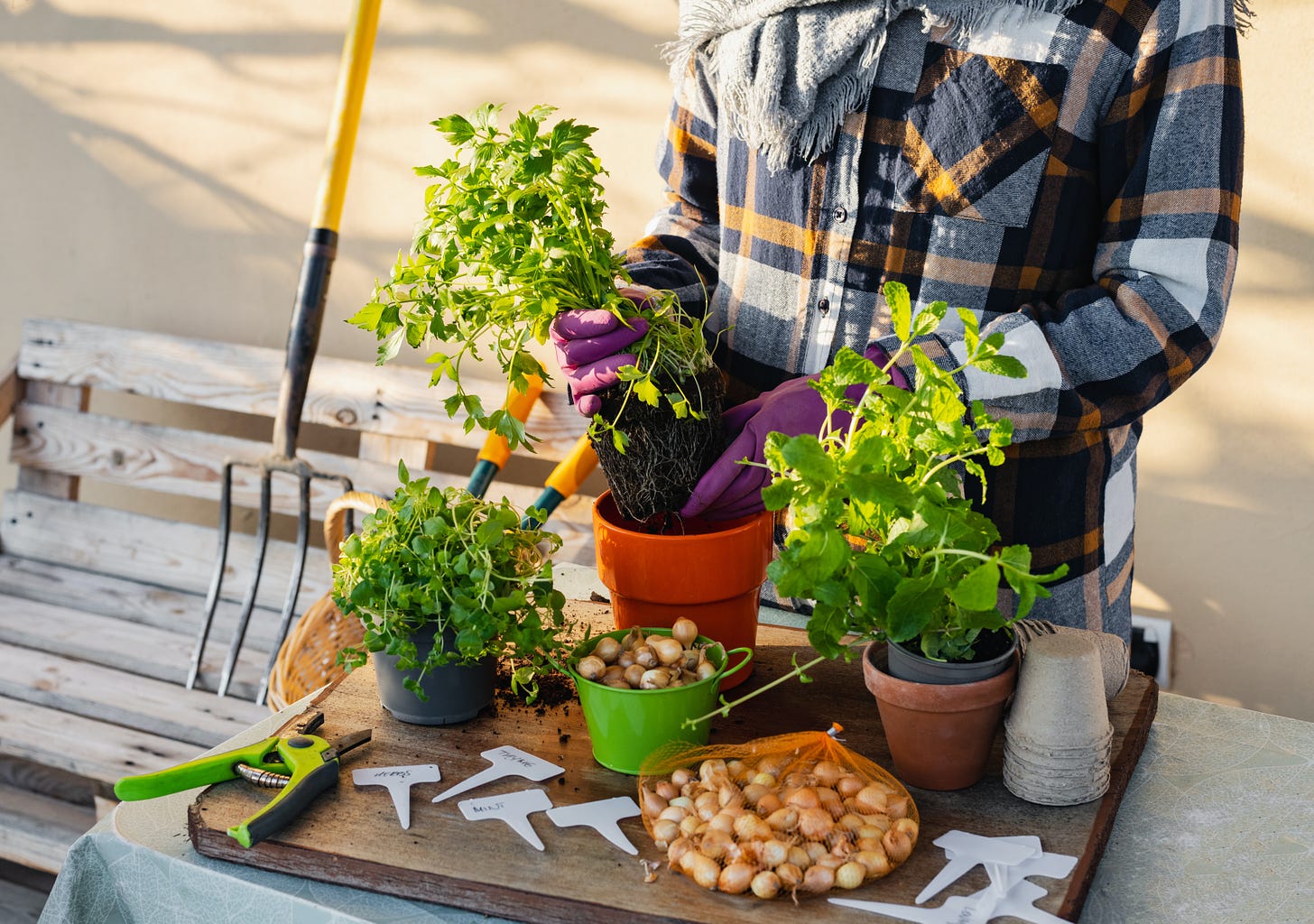
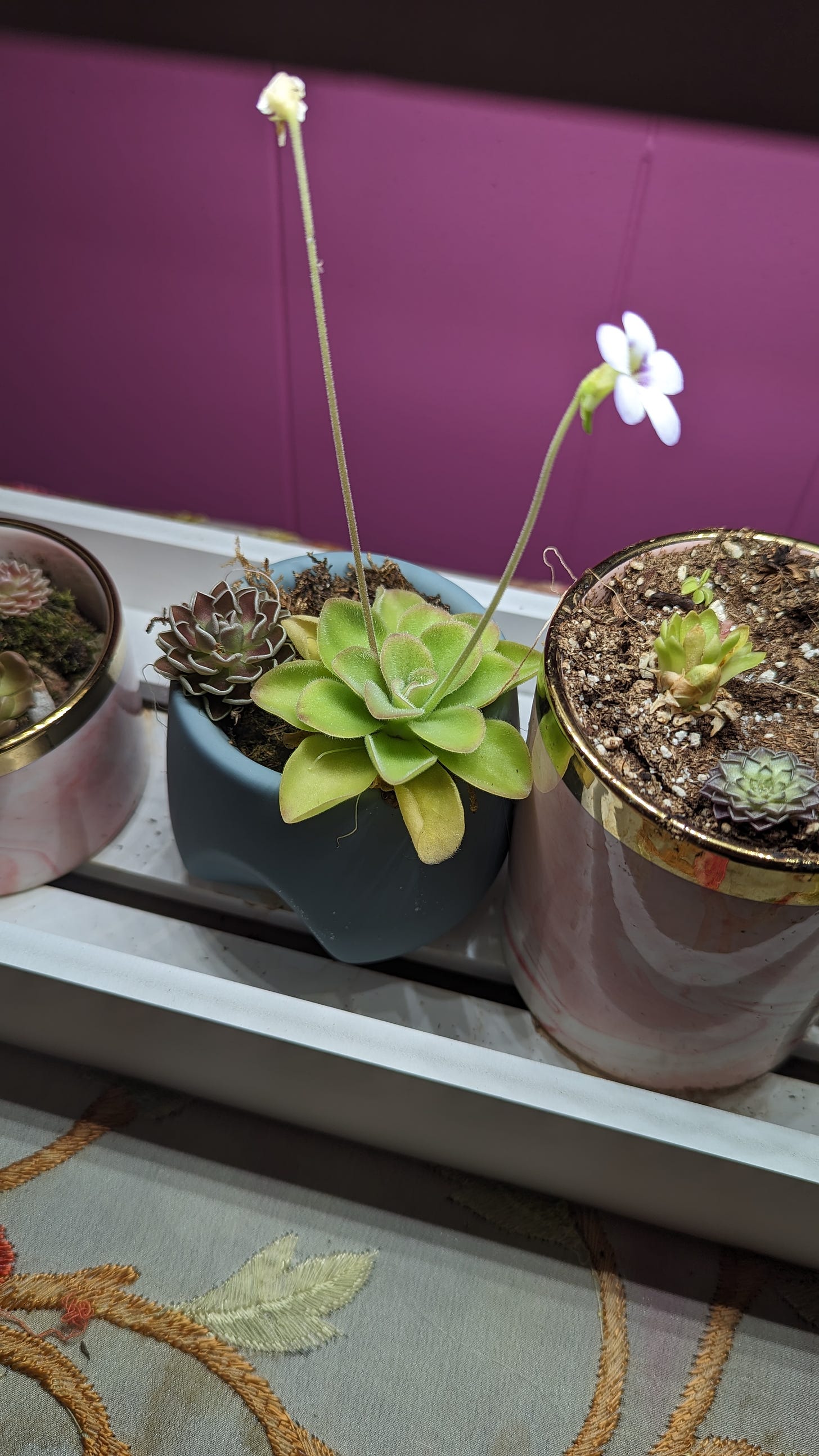
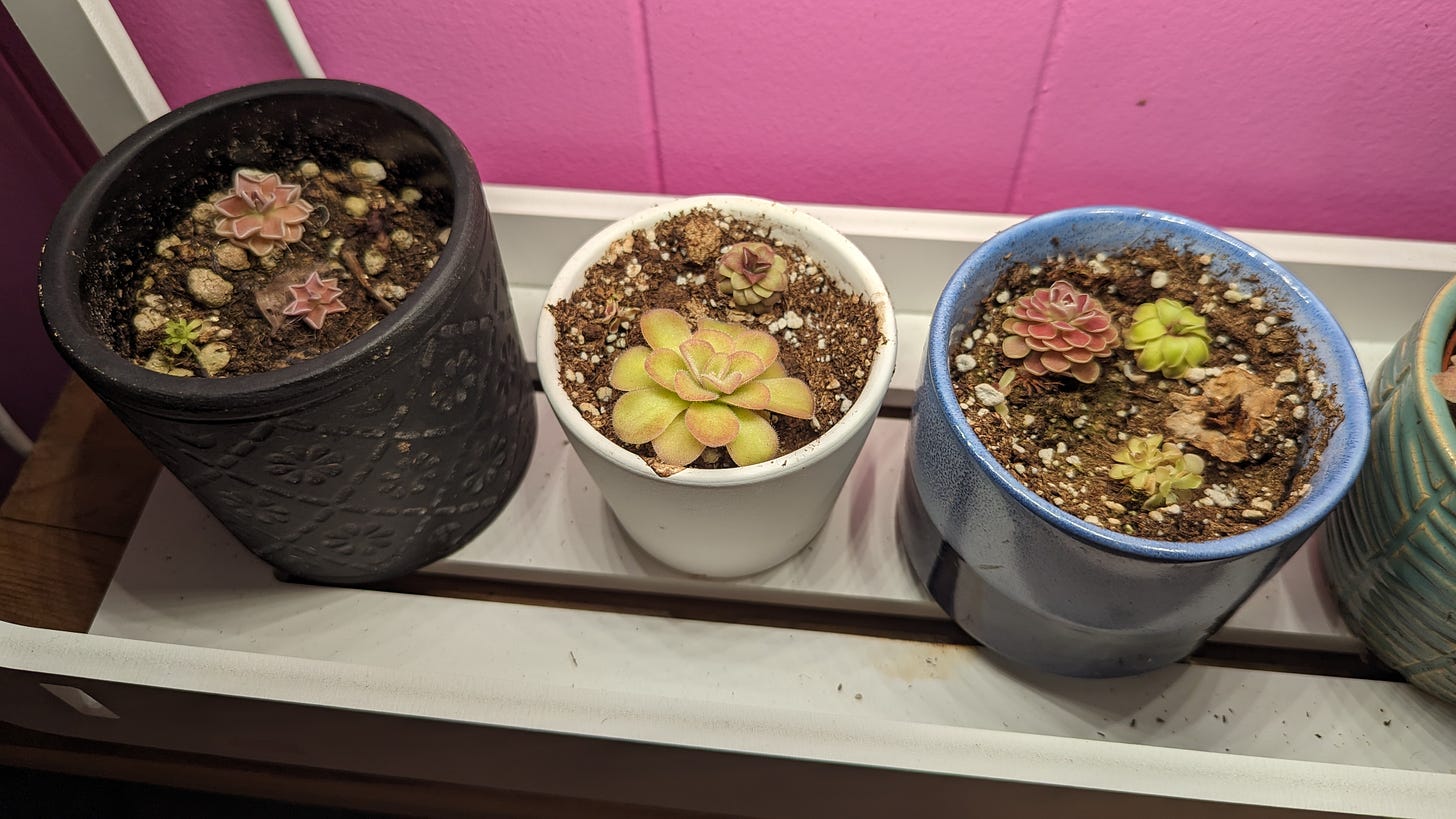
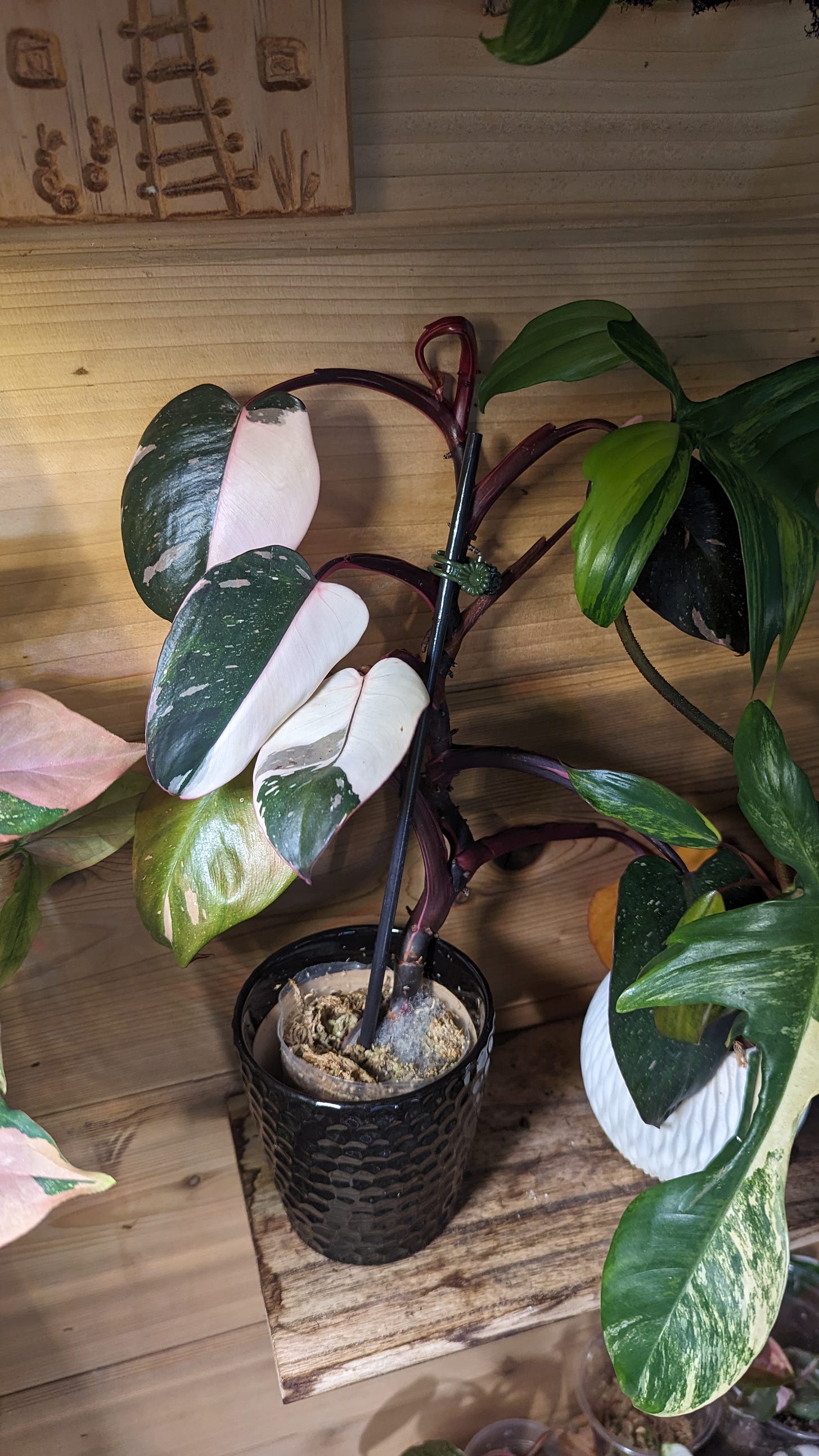
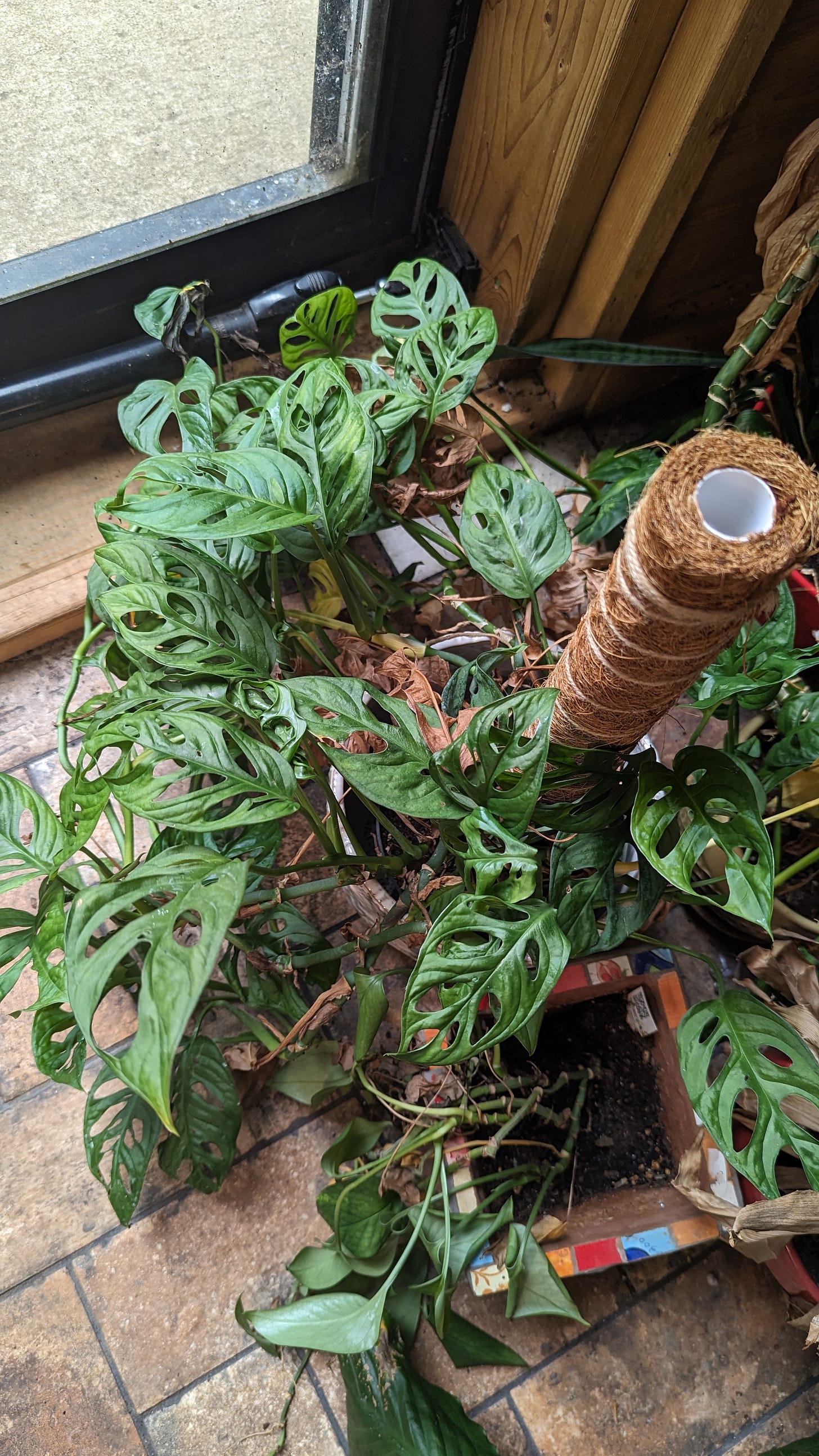

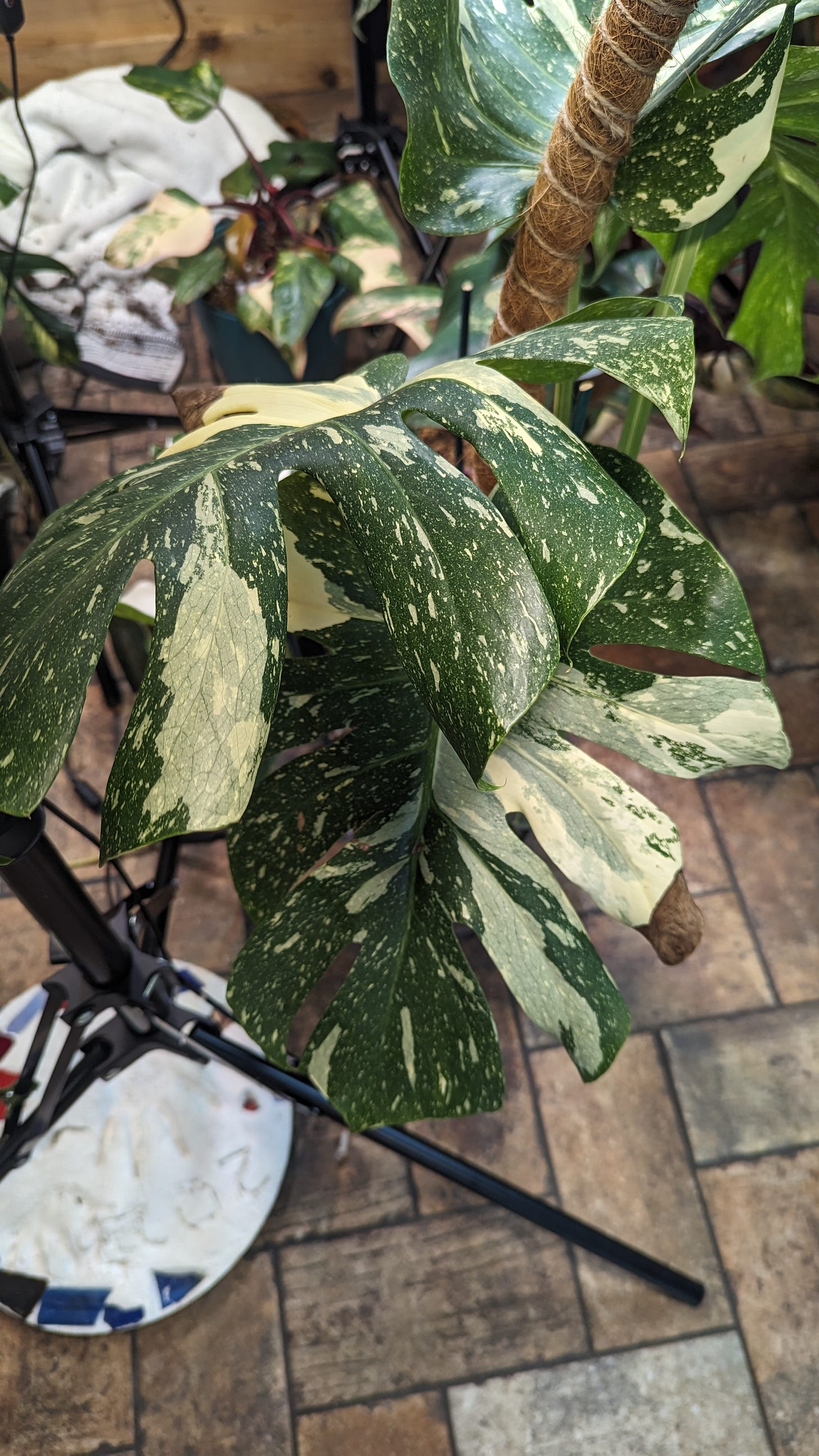
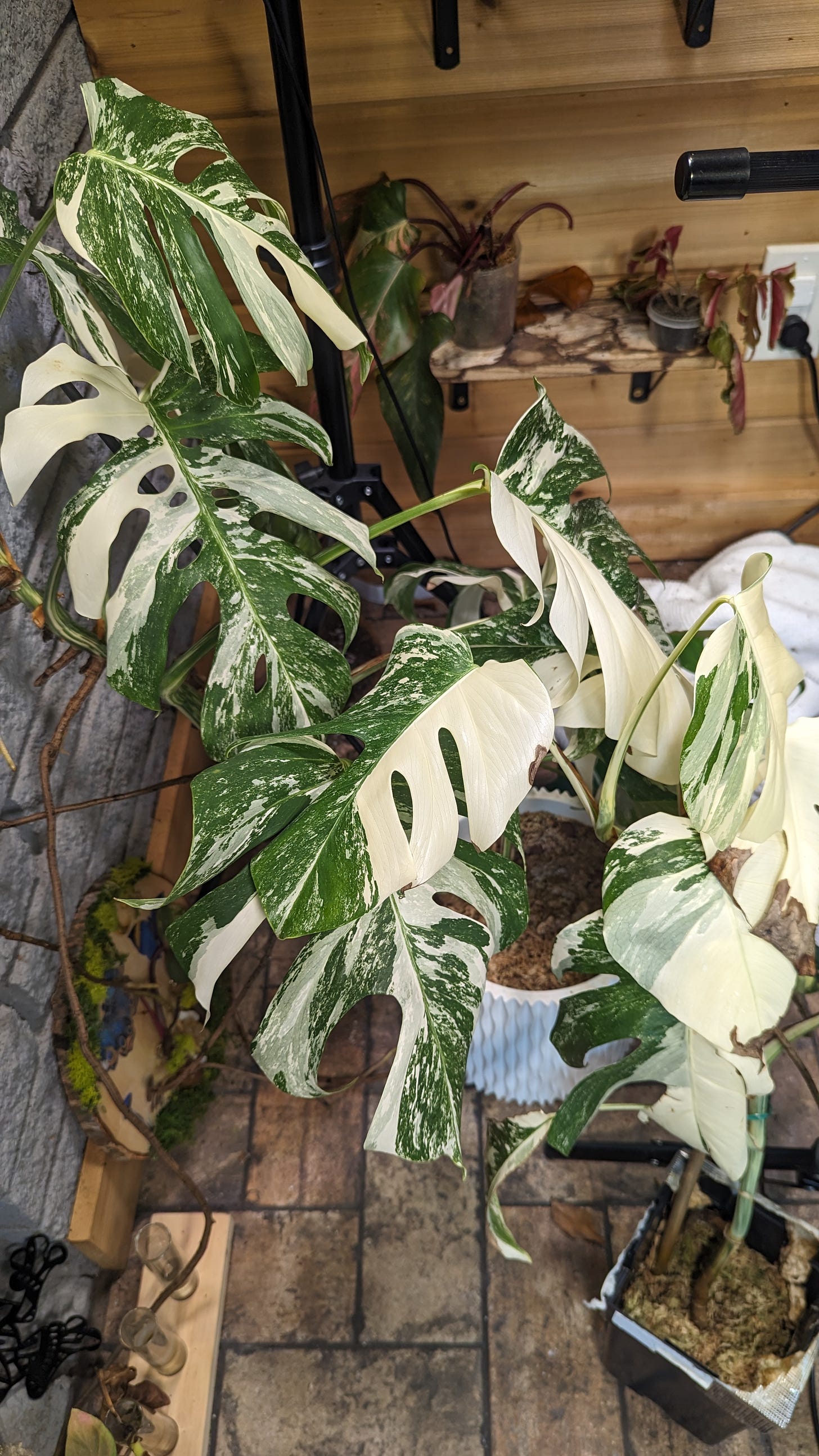
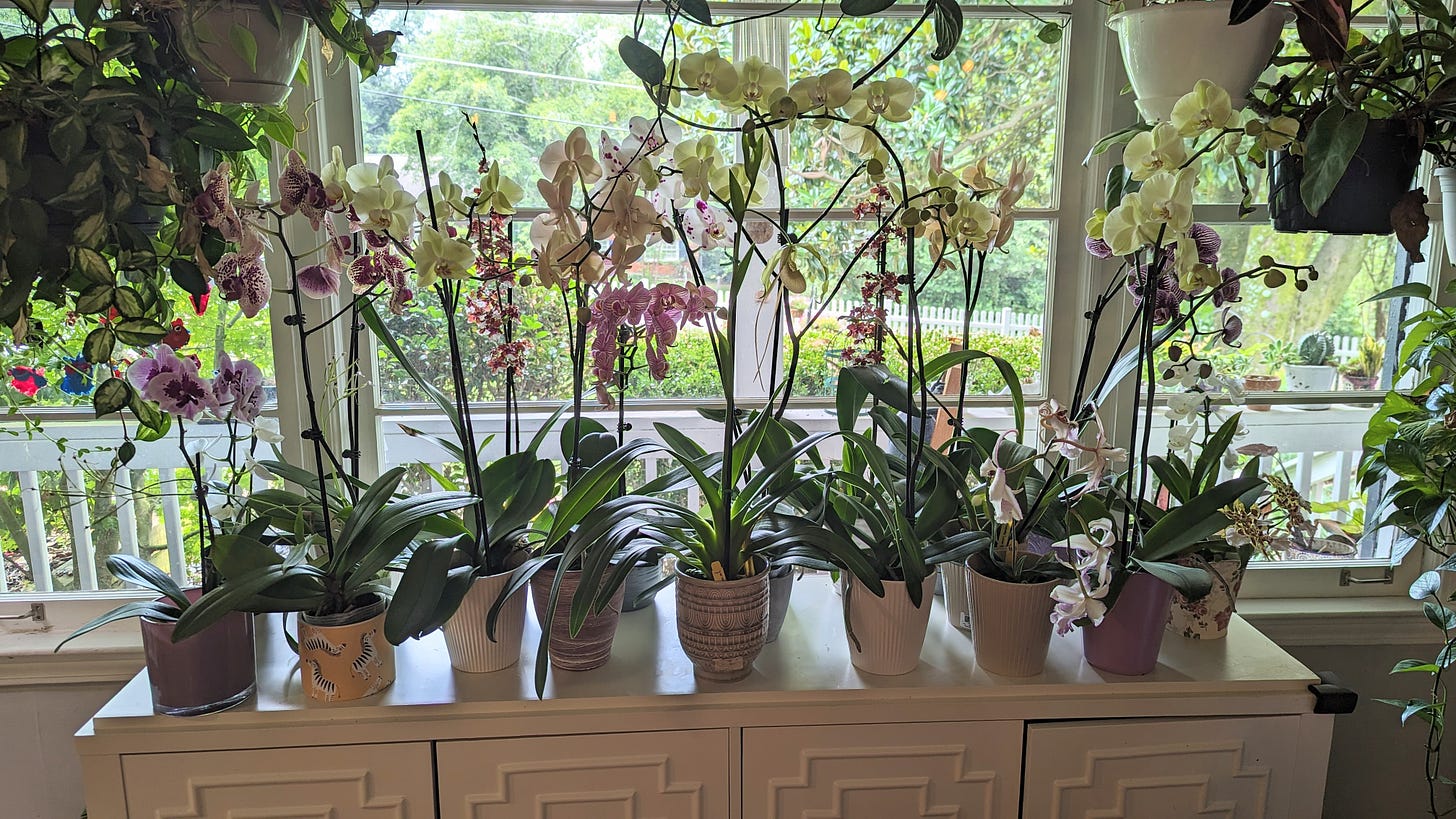

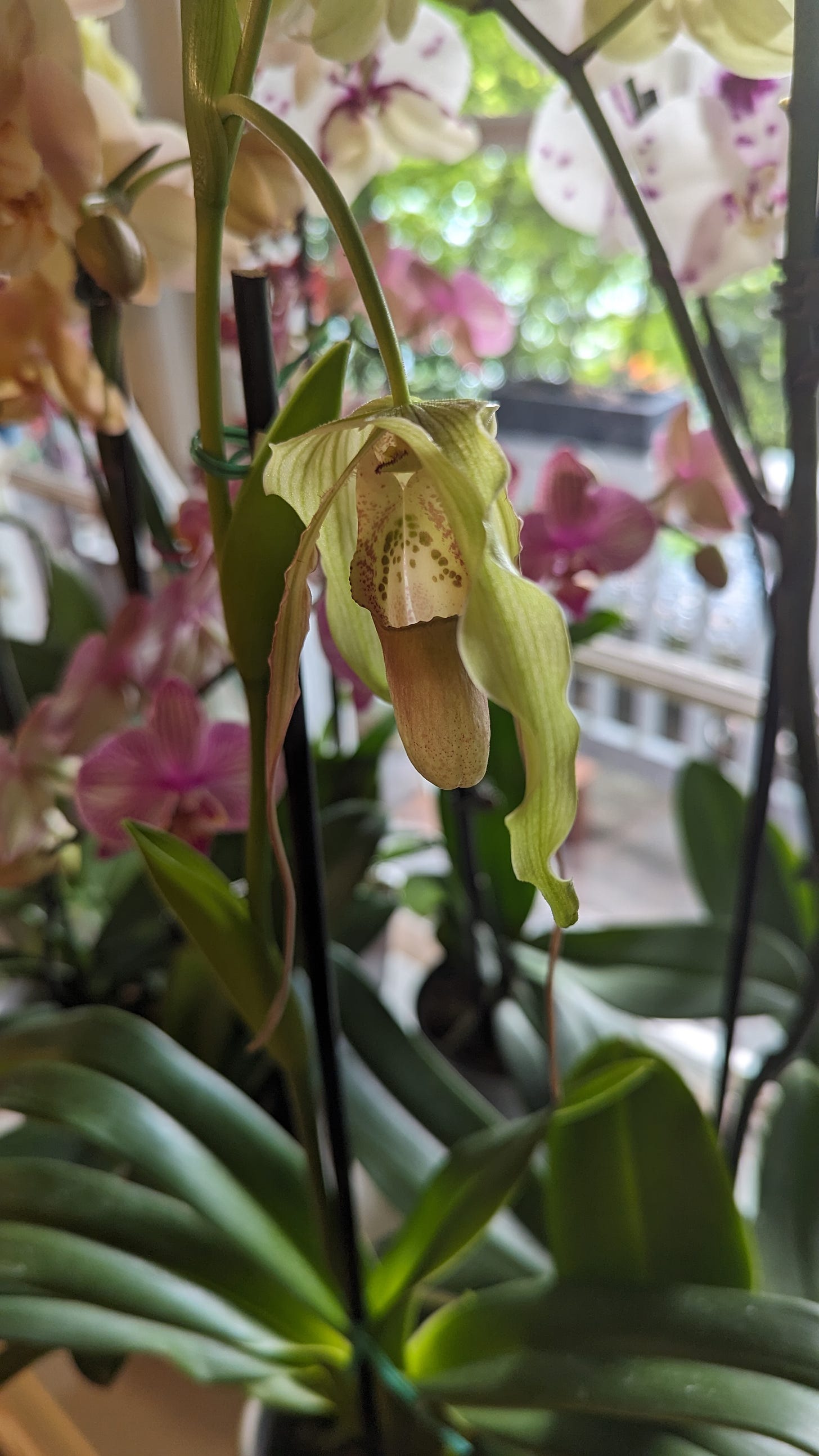
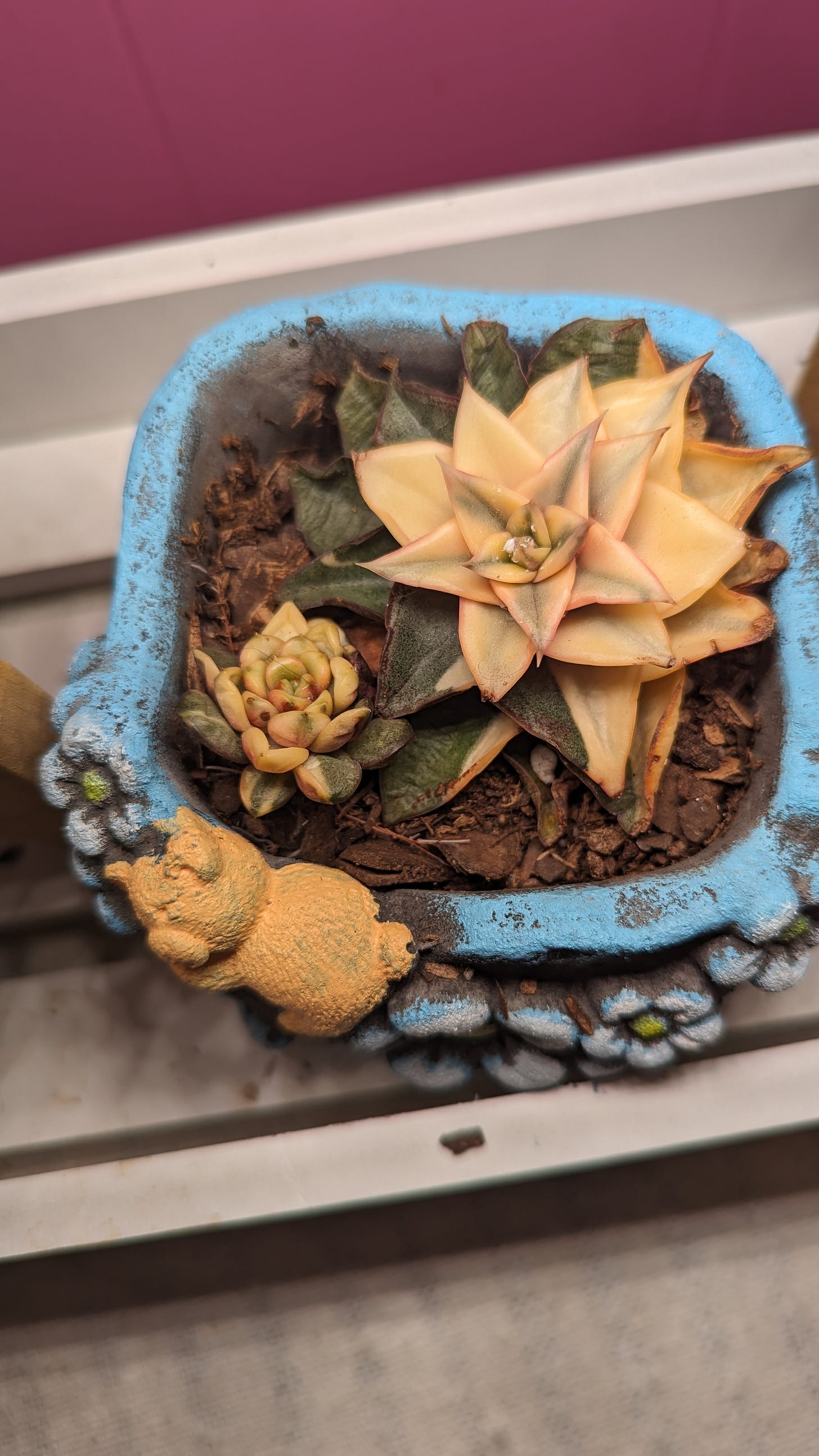
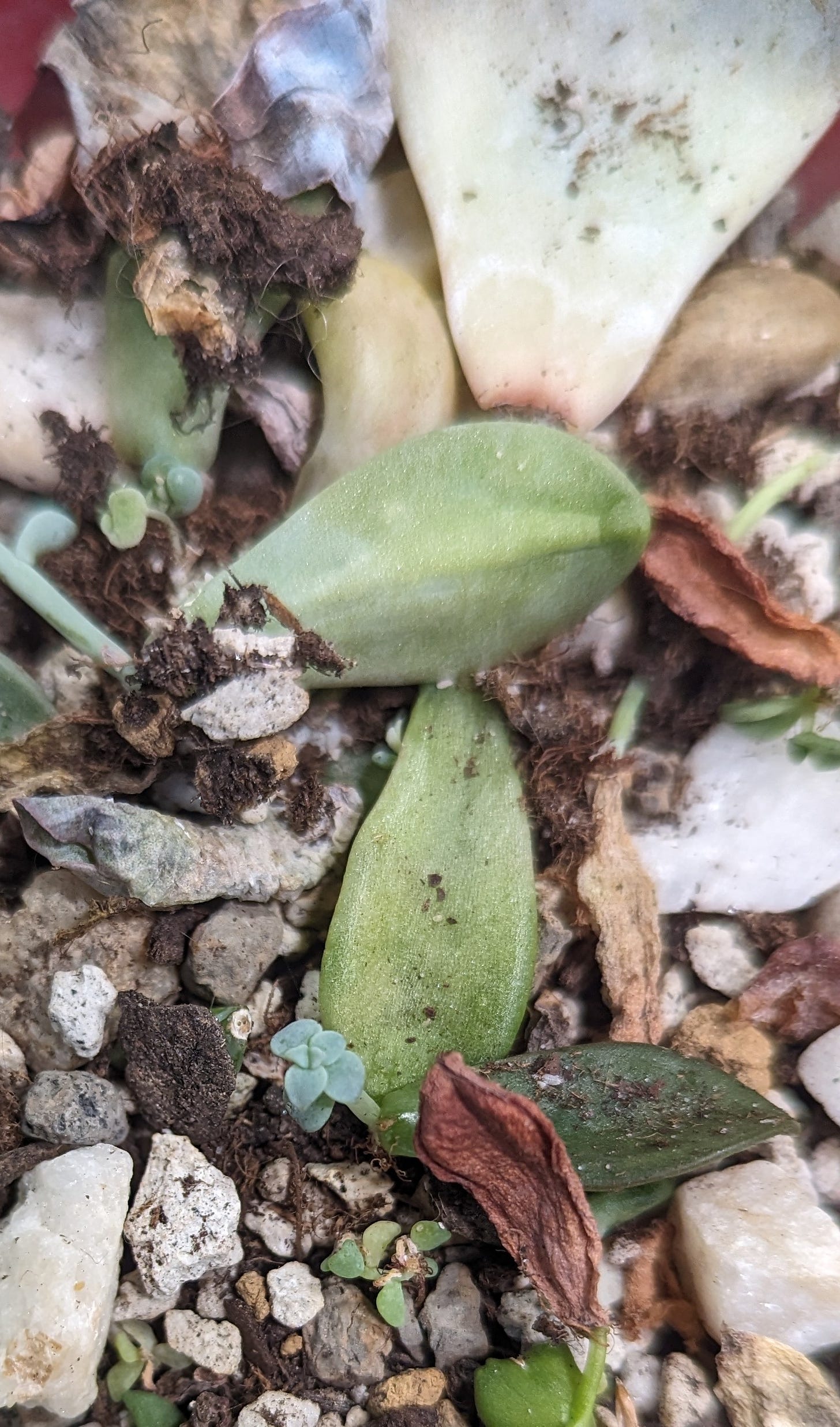
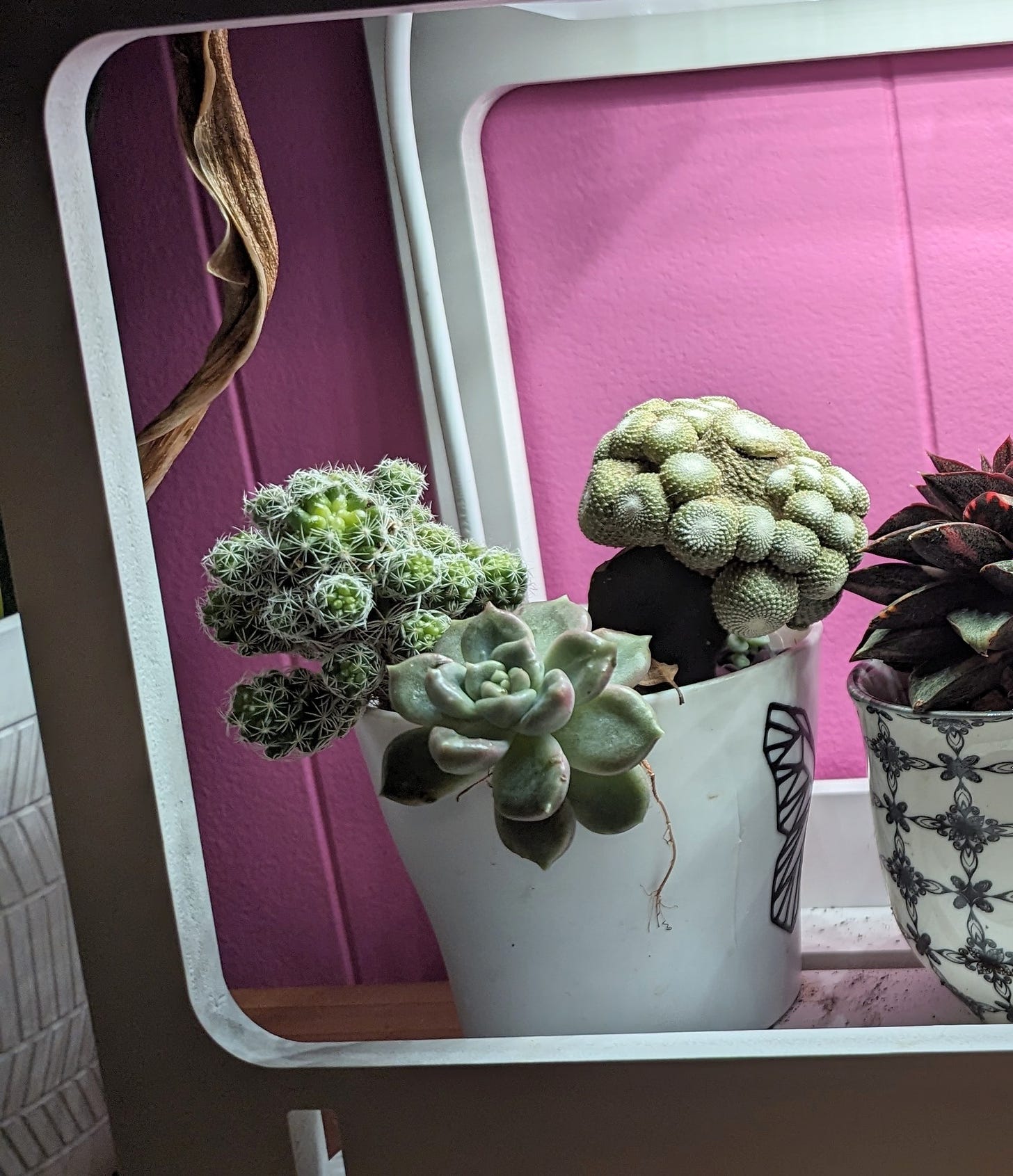
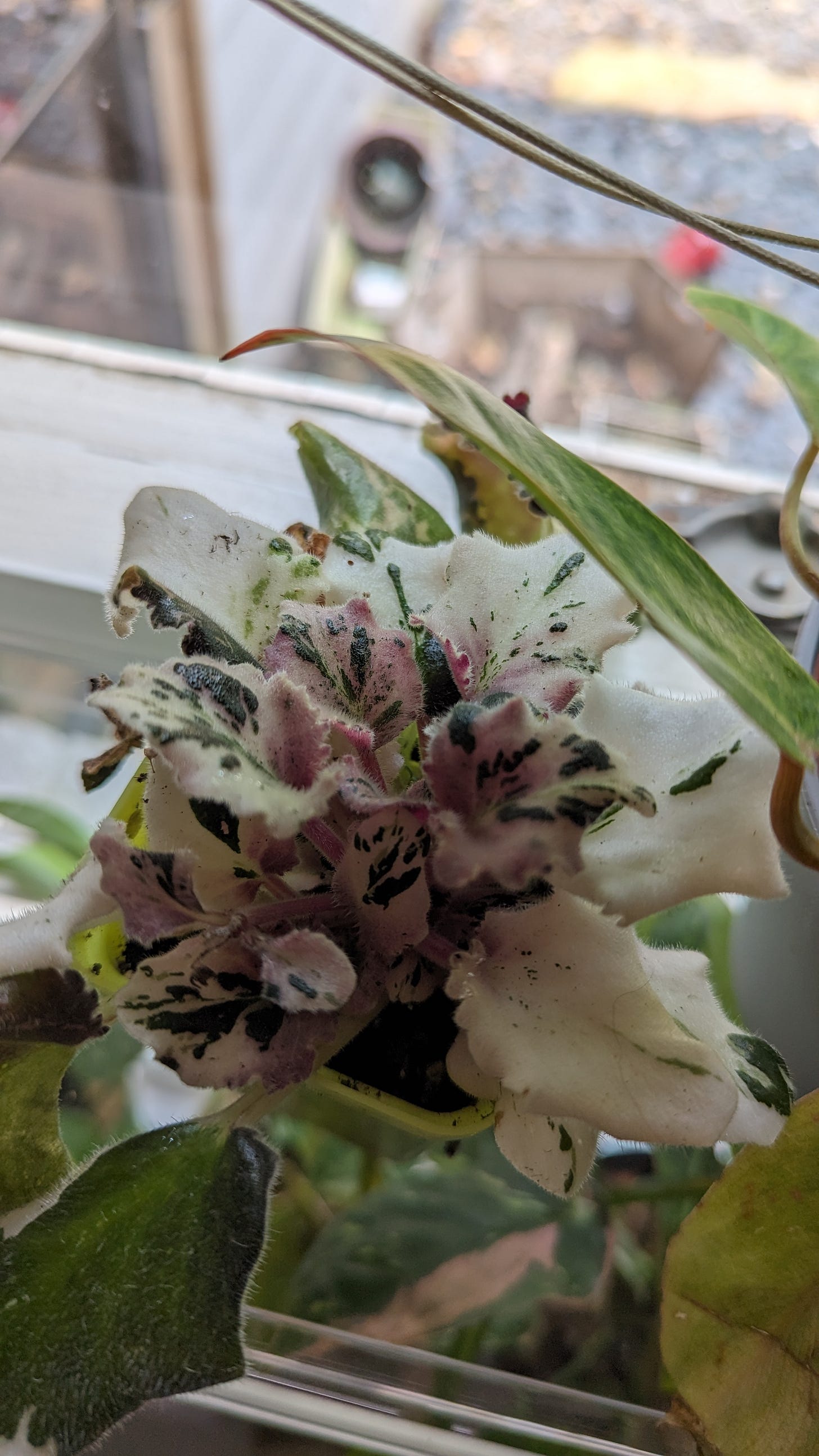
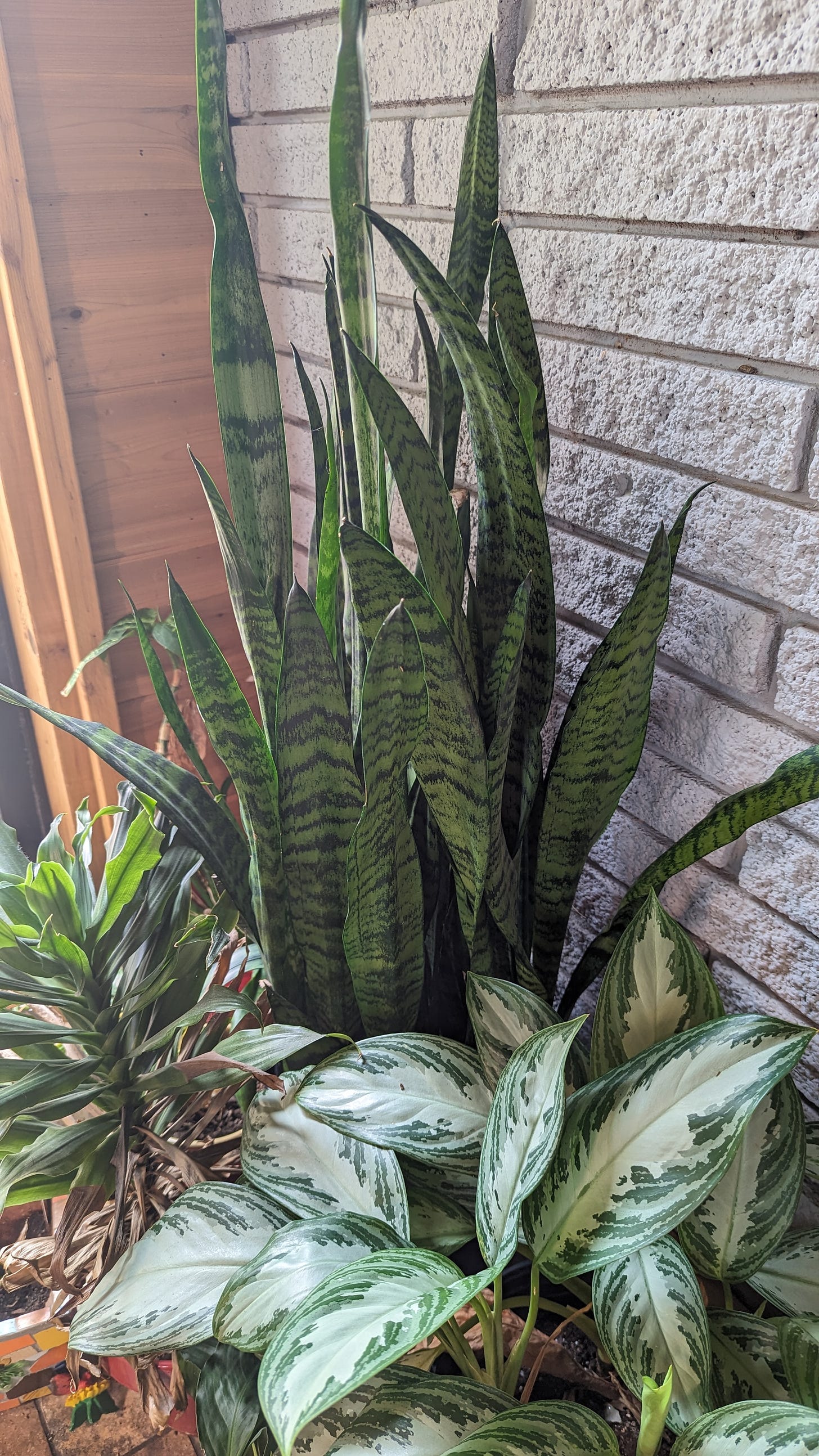
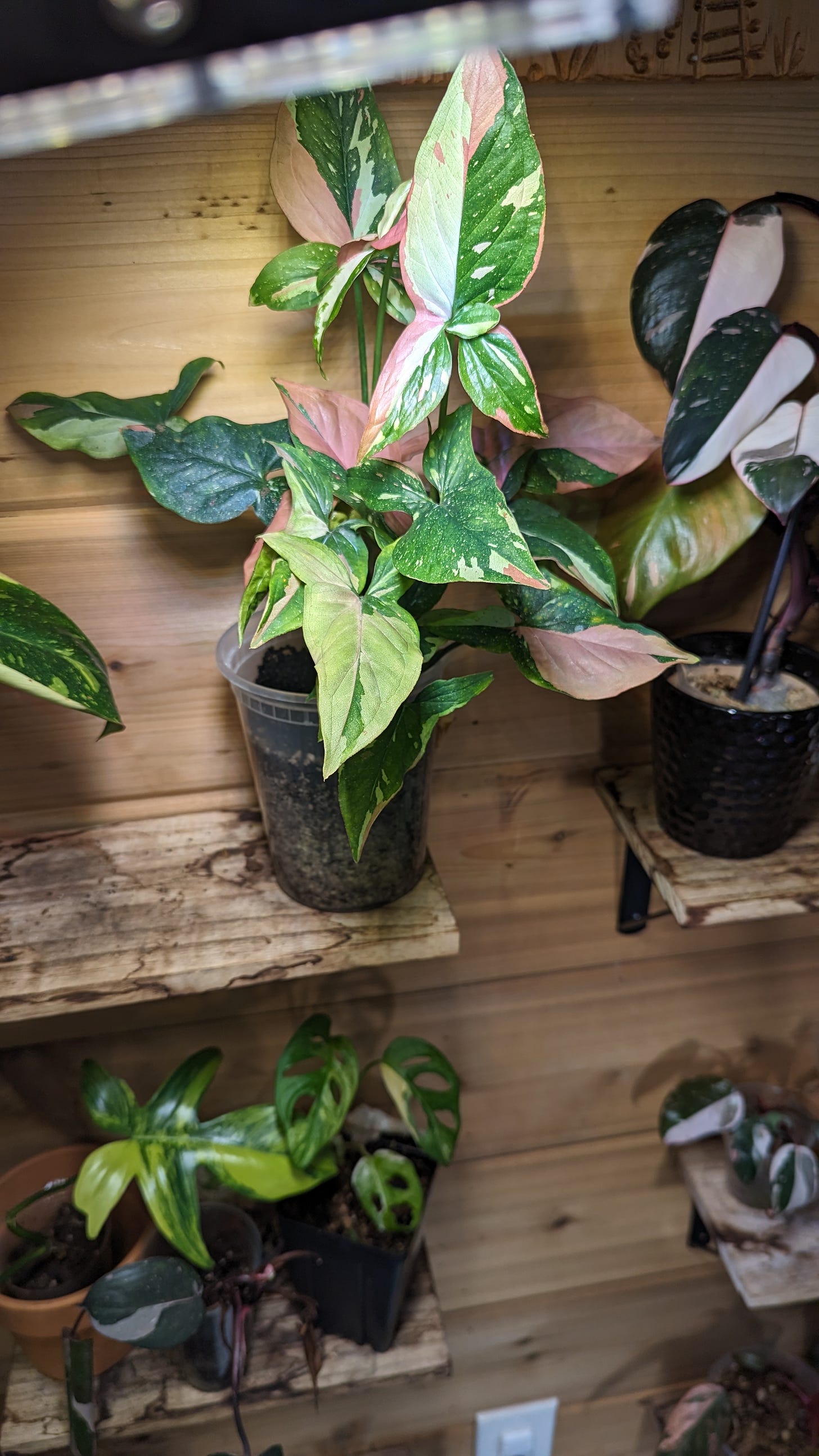
Plants interest me not at all as a hobby, so when I see people geek out about them I just go, "Wow, pretty green and pink and purple things! Awesome!" I had a co-worker who had a house stuffed to the RAFTERS with the most incredible exotic plants and gave me a thorough rundown of each when we worked together. It was great. Just from her brief infodump I could tell how much work they all were, even if it was a labor of love.
I've never thought about how the culture makes anything women are good at as something intuitive as a way to devalue our work. I see it in nursing. Despite the fact that nursing programs have an 80% passing standard and I have a veritable alphabet SOUP of credentials after my name, 90% of the time patients judge me on how "compassionate" I am (what they mean is, how fast do I answer their call button no matter how many traumas I'm caring for at the same time, as if I'm supposed to just "know" they need me). Meanwhile surgeons can have the most abysmal bedside manner but patients will shrug and say, "But I bet he works hard, and I'm sure he'll do a good job on my surgery."
I love this thanks for sharing. Also, I was a hairdresser and especially barber and so often people (men) would assume that my hard earned skill was innate. I’m currently half way through a teaching degree. Lecturers (both men and women) constantly reference parenthood as part of a skill set they assume I have, that is relevant to my degree (I’m not a parent). This drives me mad, I will one day articulate this better.